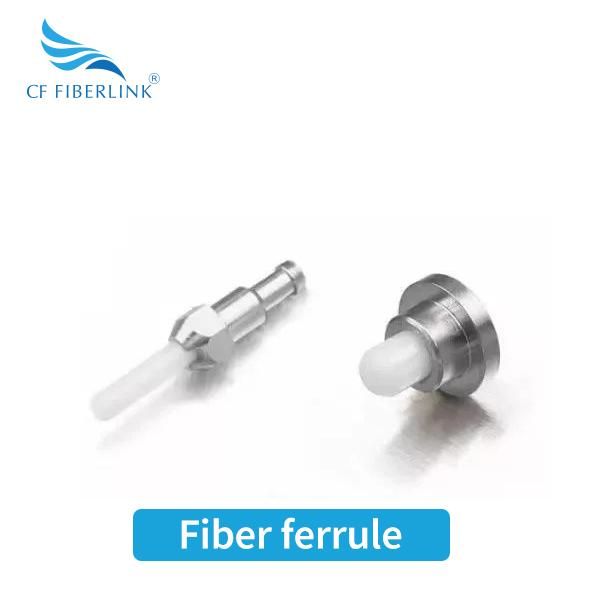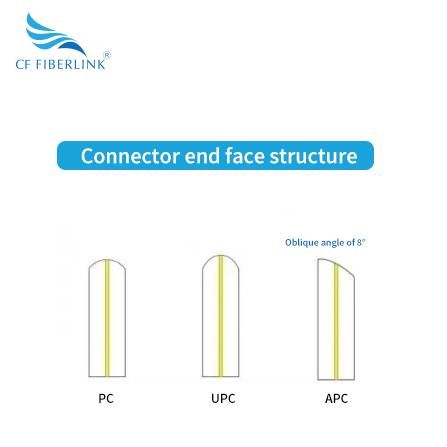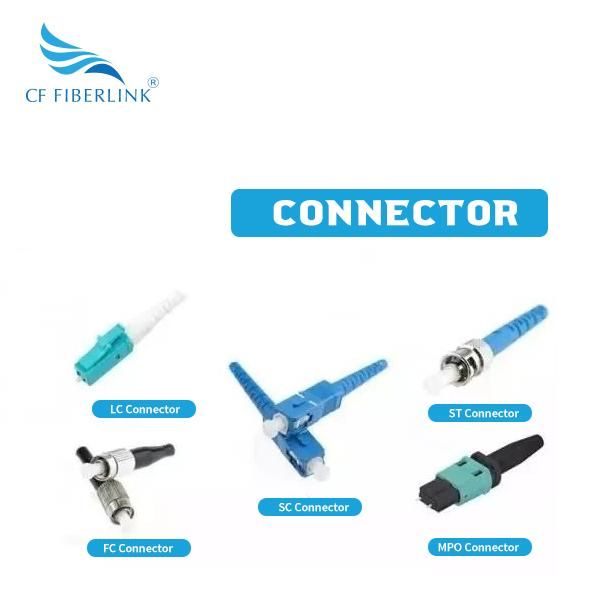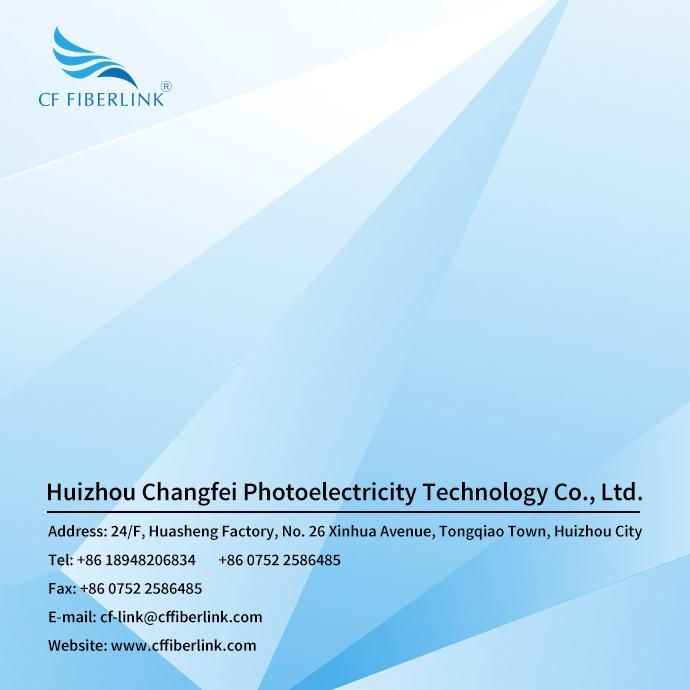The main function of fiber optic connectors is to quickly connect two fibers, allowing optical signals to be continuous and form optical paths. Fiber optic connectors are movable, reusable, and currently essential passive components with the highest usage in optical communication systems. By using fiber optic connectors, the two end faces of the fiber can be precisely connected, allowing the maximum coupling of the optical energy output from the transmitting fiber to the receiving fiber, and minimizing the impact on the system caused by its intervention. Due to the fact that the outer diameter of the optical fiber is only 125um, and the light transmission part is smaller, the single mode optical fiber is only about 9um, and there are two types of multimode optical fibers: 50um and 62.5um. Therefore, the connection between the optical fibers needs to be accurately aligned.
Core component: plug
Through the role of fiber optic connectors, it can be seen that the core component that affects connector performance is the plug core. The quality of the insert directly affects the precise center docking of two optical fibers. The materials used for making inserts include ceramic, metal, or plastic. Ceramic inserts are widely used, mainly made of zirconia, with good thermal stability, high hardness, high melting point, wear resistance, and high machining accuracy. The sleeve is another important component of the connector, which serves as an alignment to facilitate the installation and fixation of the connector. The inner diameter of the ceramic sleeve is slightly smaller than the outer diameter of the insert, and the slotted sleeve clamps the two insert cores tightly to achieve precise alignment.

In order to ensure better contact between the end faces of two optical fibers, the plug end faces are usually ground into different structures. PC, APC, and UPC represent the front end structure of ceramic inserts. PC is a physical contact. PC is ground and polished on the microsphere surface, and the surface of the insert is ground into a slight spherical surface. The fiber core is located at the highest point of bending, so that the two fiber end faces reach physical contact. APC (Angled Physical Contact) is called an inclined physical contact, and the fiber end face is usually ground to an 8 ° inclined plane. The 8 ° angle ramp makes the fiber end face tighter and reflects light through its ramp angle to the cladding instead of directly returning to the light source, providing better connection performance. UPC (Ultra Physical Contact), a super physical end face. UPC optimizes the end face polishing and surface finish on the basis of PC, making the end face appear more dome like. The connector connection needs to have the same end face structure, such as APC and UPC cannot be combined together, which can lead to a decrease in connector performance.

Basic parameters: insertion loss, return loss
Due to the different end faces of the insert, the performance of the connector loss also varies. The optical performance of fiber optic connectors is mainly measured by two basic parameters: insertion loss and return loss. So, what is insertion loss? Insertion Loss (commonly referred to as "L") is the optical power loss caused by connections. Mainly used to measure the optical loss between two fixed points in optical fibers, usually caused by lateral deviation between two optical fibers, longitudinal gap in the fiber connector, end face quality, etc. The unit is expressed in decibels (dB), and the smaller the value, the better. Generally, it should not exceed 0.5dB.
Return Loss (RL), commonly referred to as "RL", refers to a parameter of signal reflection performance, describing the power loss of optical signal return/reflection. Generally, the larger the better, and the value is usually expressed in decibels (dB). The typical RL value for APC connectors is about -60dB, while for PC connectors, the typical RL value is about -30dB.
The performance of fiber optic connectors requires consideration of both insertion loss and return loss
In addition to optical performance parameters, when selecting a good fiber optic connector, attention should also be paid to the interchangeability, repeatability, tensile strength, operating temperature, insertion and extraction times, etc. of the fiber optic connector.
Connector type
Connectors are divided into LC, SC, FC, ST, MU, MT according to their connection methods
MPO/MTP, etc; According to the fiber end face, it is divided into FC, PC, UPC, and APC.

LC Connectors
The LC type connector is made using a modular jack (RJ) latch mechanism that is easy to operate. The size of the pins and sleeves used in LC connectors is generally 1.25mm compared to that used in ordinary SC, FC, etc., so their appearance size is only half of that of SCFC.
SC connector
The connector of the SC connector (Subscriber Connector 'or Standard Connector') is a snap on standard square connector, and the fastening method is a plug-in latch type without the need for rotation. This type of connector is made of engineering plastic, which is cheap and easy to insert and remove.
FC connector
The size of FC fiber optic connector and SC connector is the same, but the difference is that FC uses a metal sleeve and the fastening method is a screw buckle. The structure is simple, easy to operate, easy to make, durable, and can be used in high vibration environments.
T-ST Connectors
The shell of ST fiber optic connector (Straight Tip) is circular and adopts a 2.5mm circular plastic or metal shell, with a fastening method of screw buckle. It is commonly used in fiber optic distribution frames
MTP/MPO connector
MTP/MPO fiber optic connector is a special type of multi fiber optic connector.
The structure of MPO connectors is relatively complex, connecting 12 or 24 optical fibers into a rectangular optical fiber insert. Usually used in high-density connection scenarios, such as data centers, in addition to the above, connector types include MU connectors, MT connectors, MTRJ connectors, E2000 connectors, etc. SC may be the most commonly used fiber optic connector currently, mainly due to its low-cost design. LC fiber optic connectors are also a common type
A widely used fiber optic connector, especially for connecting to SFP and SFP+fiber optic transceivers. FC is commonly used in single-mode fibers and is relatively rare in multimode fibers. The complex design and use of metals make it more expensive. ST fiber optic connectors are typically used for long and short distance applications, such as campus and building multimode fiber optic applications, enterprise network environments, and military applications.
Yiyuantong provides various specifications and types of fiber optic connectors, including SC
FC, LC, ST, MPO, MTP, etc. Guangdong Yiyuantong Technology Co., Ltd. (HYC) is a national high-tech enterprise that focuses on the research and development, manufacturing, sales, and service of passive basic devices for optical communication. Main business of the company
The product is: fiber optic connector (data center high-density optical connector), wavelength division multiplexing
Three core optical passive basic devices, including splitters and optical splitters, are widely used in optical fibers
Home to home, 4G/5G mobile communication, internet data center, national defense communication, etc field

Post time: May-25-2023

